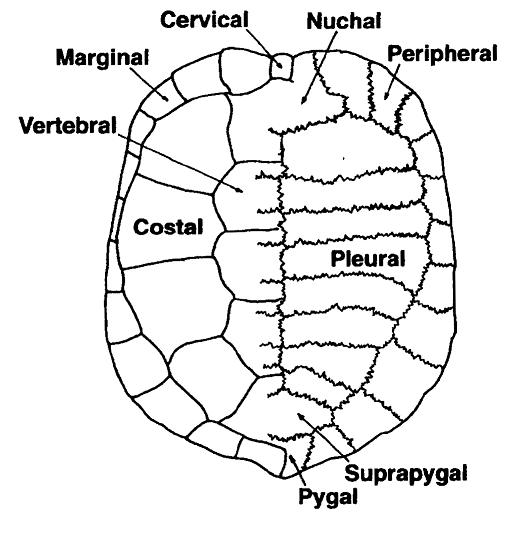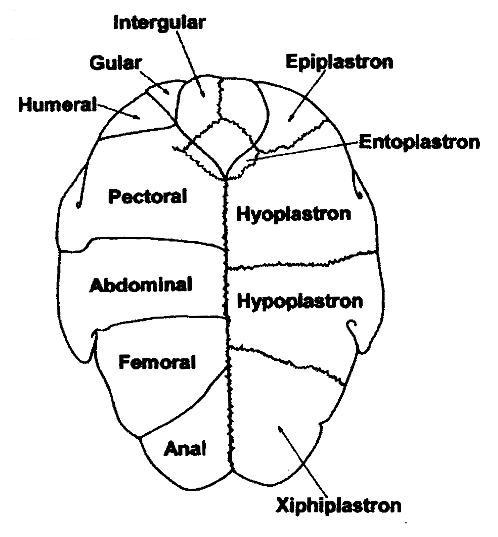|
Acanthochelys
''Acanthochelys'' is a genus of turtles, the spiny swamp turtles, in the family Chelidae, subfamily Chelinae, found in South America. Until recently, the species of this genus were considered to be members of the genus ''Platemys'', but were moved to the resurrected genus originally described by Gray (1873) based on the type species by monotypy ''Acanthochelys spixii''.Iverson, J. B. 1992. A Revised Checklist with Distribution Maps of the Turtles of the World. Privately Printed, Richmond: Indiana. 364pp. Taxonomy Current nomenclature for this genus follows that of van Dijk et al. (2012):Peter Paul van Dijk, John B. Iverson, H. Bradley Shaffer, Roger Bour, and Anders G.J. Rhodin. 2012. Turtles of the World, 2012 Update: Annotated Checklist of Taxonomy, Synonymy, Distribution, and Conservation Status. Chelonian Research Monographs No. 5, pp. 000.243–000.328. * Big-headed pantanal swamp turtle (''A. macrocephala'' Rhodin, Mittermeier, and McMorris 1984)Rhodin, Anders G.J., Mitterme ... [...More Info...] [...Related Items...] OR: [Wikipedia] [Google] [Baidu] |
Acanthochelys
''Acanthochelys'' is a genus of turtles, the spiny swamp turtles, in the family Chelidae, subfamily Chelinae, found in South America. Until recently, the species of this genus were considered to be members of the genus ''Platemys'', but were moved to the resurrected genus originally described by Gray (1873) based on the type species by monotypy ''Acanthochelys spixii''.Iverson, J. B. 1992. A Revised Checklist with Distribution Maps of the Turtles of the World. Privately Printed, Richmond: Indiana. 364pp. Taxonomy Current nomenclature for this genus follows that of van Dijk et al. (2012):Peter Paul van Dijk, John B. Iverson, H. Bradley Shaffer, Roger Bour, and Anders G.J. Rhodin. 2012. Turtles of the World, 2012 Update: Annotated Checklist of Taxonomy, Synonymy, Distribution, and Conservation Status. Chelonian Research Monographs No. 5, pp. 000.243–000.328. * Big-headed pantanal swamp turtle (''A. macrocephala'' Rhodin, Mittermeier, and McMorris 1984)Rhodin, Anders G.J., Mitterme ... [...More Info...] [...Related Items...] OR: [Wikipedia] [Google] [Baidu] |
Acanthochelys Spixii
The black spine-neck swamp turtle (''Acanthochelys spixii''), also commonly known as the spiny-neck turtle or Spix's sideneck turtle, is a species of turtle in the family Chelidae. The species is endemic to South America, specially in the Southern Cone region. Etymology The specific name, ''spixii'', is in honor of German biologist Johann Baptist von Spix. Geographic range ''A. spixii'' is found in Argentina, Brazil, Uruguay, www.reptile-database.org. and possibly Paraguay Paraguay (; ), officially the Republic of Paraguay ( es, República del Paraguay, links=no; gn, Tavakuairetã Paraguái, links=si), is a landlocked country in South America. It is bordered by Argentina to the south and southwest, Brazil to th .... References Acanthochelys Turtles of South America Reptiles of Argentina Reptiles of Brazil Reptiles of Uruguay Reptiles described in 1835 Taxa named by André Marie Constant Duméril Taxa named by Gabriel Bibron Taxonomy articles created by Pol ... [...More Info...] [...Related Items...] OR: [Wikipedia] [Google] [Baidu] |
Black Spine-neck Swamp Turtle
The black spine-neck swamp turtle (''Acanthochelys spixii''), also commonly known as the spiny-neck turtle or Spix's sideneck turtle, is a species of turtle in the family Chelidae. The species is endemic to South America, specially in the Southern Cone region. Etymology The specific name, ''spixii'', is in honor of German biologist Johann Baptist von Spix. Geographic range ''A. spixii'' is found in Argentina, Brazil, Uruguay, www.reptile-database.org. and possibly Paraguay Paraguay (; ), officially the Republic of Paraguay ( es, República del Paraguay, links=no; gn, Tavakuairetã Paraguái, links=si), is a landlocked country in South America. It is bordered by Argentina to the south and southwest, Brazil to th .... References Acanthochelys Turtles of South America Reptiles of Argentina Reptiles of Brazil Reptiles of Uruguay Reptiles described in 1835 Taxa named by André Marie Constant Duméril Taxa named by Gabriel Bibron Taxonomy articles created by ... [...More Info...] [...Related Items...] OR: [Wikipedia] [Google] [Baidu] |
Acanthochelys Macrocephala
The big-headed pantanal swamp turtle or pantanal swamp turtle (''Acanthochelys macrocephala'') is a species of turtle in the family Chelidae found in Brazil, Bolivia, Argentina, and Paraguay. Recognition This is the largest of the South American ''Acanthochelys'' species, growing to in carapace length. It has a broad, oval to moderately elongated, deep carapace with a shallow dorsal groove extending along the second to fourth vertebrals. The first and fifth vertebral scutes are very broad, the second through fourth may be slightly longer than broad, and the fifth is laterally expanded. Vertebral and pleural scutes may be rugose with growth annuli. Marginals 1, 2, and 8-10 are slightly expanded but not flared, and 3-7 are often slightly upturned. The carapace is highest just behind the center and broadest at the level of the anterior part of the eighth marginals; its posterior rim may be weakly serrated. The carapace is dark to blackish brown, but may be light brown in some. J ... [...More Info...] [...Related Items...] OR: [Wikipedia] [Google] [Baidu] |
Big-headed Pantanal Swamp Turtle
The big-headed pantanal swamp turtle or pantanal swamp turtle (''Acanthochelys macrocephala'') is a species of turtle in the family Chelidae found in Brazil, Bolivia, Argentina, and Paraguay. Recognition This is the largest of the South American ''Acanthochelys'' species, growing to in carapace length. It has a broad, oval to moderately elongated, deep carapace with a shallow dorsal groove extending along the second to fourth vertebrals. The first and fifth vertebral scutes are very broad, the second through fourth may be slightly longer than broad, and the fifth is laterally expanded. Vertebral and pleural scutes may be rugose with growth annuli. Marginals 1, 2, and 8-10 are slightly expanded but not flared, and 3-7 are often slightly upturned. The carapace is highest just behind the center and broadest at the level of the anterior part of the eighth marginals; its posterior rim may be weakly serrated. The carapace is dark to blackish brown, but may be light brown in some. J ... [...More Info...] [...Related Items...] OR: [Wikipedia] [Google] [Baidu] |
Acanthochelys Pallidipectoris
The Chaco side-necked turtle or Chaco sideneck turtle (''Acanthochelys pallidipectoris'') is a species of turtle in the family Chelidae. It is found in Argentina, Paraguay, and possibly Bolivia. Its natural habitat is subtropical or tropical moist montane forest Montane ecosystems are found on the slopes of mountains. The alpine climate in these regions strongly affects the ecosystem because temperatures fall as elevation increases, causing the ecosystem to stratify. This stratification is a crucial ...s. The turtle possesses long horny spurs on its upper thighs. It is 18 cm in shell length. Like other members of its genus, the turtle buries itself in the mud when the streams run dry, a behaviour possibly parallel to the winter hibernating behaviours of turtles further north. References *Encyclopedia of Animals: Mammals, Birds, Reptiles and Amphibians, Harold G. Cogger, Edwin Gould, Joseph Forshaw Acanthochelys Turtles of South America Reptiles of Argentina ... [...More Info...] [...Related Items...] OR: [Wikipedia] [Google] [Baidu] |
Chaco Side-necked Turtle
The Chaco side-necked turtle or Chaco sideneck turtle (''Acanthochelys pallidipectoris'') is a species of turtle in the family Chelidae. It is found in Argentina, Paraguay, and possibly Bolivia. Its natural habitat is subtropical or tropical moist montane forest Montane ecosystems are found on the slopes of mountains. The alpine climate in these regions strongly affects the ecosystem because temperatures fall as elevation increases, causing the ecosystem to stratify. This stratification is a crucial ...s. The turtle possesses long horny spurs on its upper thighs. It is 18 cm in shell length. Like other members of its genus, the turtle buries itself in the mud when the streams run dry, a behaviour possibly parallel to the winter hibernating behaviours of turtles further north. References *Encyclopedia of Animals: Mammals, Birds, Reptiles and Amphibians, Harold G. Cogger, Edwin Gould, Joseph Forshaw Acanthochelys Turtles of South America Reptiles of Argentina ... [...More Info...] [...Related Items...] OR: [Wikipedia] [Google] [Baidu] |
Acanthochelys Radiolata
The Brazilian radiolated swamp turtle (''Acanthochelys radiolata'') is a species of turtle in the Chelidae family endemic Endemism is the state of a species being found in a single defined geographic location, such as an island, state, nation, country or other defined zone; organisms that are indigenous to a place are not endemic to it if they are also found else ... to Brazil. References Acanthochelys Turtles of South America Endemic fauna of Brazil Reptiles of Brazil Near threatened animals Near threatened biota of South America Reptiles described in 1820 Taxonomy articles created by Polbot {{Turtle-stub ... [...More Info...] [...Related Items...] OR: [Wikipedia] [Google] [Baidu] |
Brazilian Radiolated Swamp Turtle
The Brazilian radiolated swamp turtle (''Acanthochelys radiolata'') is a species of turtle in the Chelidae family endemic Endemism is the state of a species being found in a single defined geographic location, such as an island, state, nation, country or other defined zone; organisms that are indigenous to a place are not endemic to it if they are also found else ... to Brazil. References Acanthochelys Turtles of South America Endemic fauna of Brazil Reptiles of Brazil Near threatened animals Near threatened biota of South America Reptiles described in 1820 Taxonomy articles created by Polbot {{Turtle-stub ... [...More Info...] [...Related Items...] OR: [Wikipedia] [Google] [Baidu] |
Chelidae
Chelidae is one of three living families of the turtle suborder Pleurodira, and are commonly called Austro-South American side-neck turtles. The family is distributed in Australia, New Guinea, parts of Indonesia, and throughout most of South America. It is a large family of turtles with a significant fossil history dating back to the Cretaceous. The family is entirely Gondwanan in origin, with no members found outside Gondwana, either in the present day or as a fossil.Georges, A. & Thomson, S. (2006). "Evolution and Zoogeography of Australian freshwater turtles". In: Merrick, J. R.; Archer, M.; Hickey, G. & Lee, M. (eds.) ''Evolution and Zoogeography of Australasian Vertebrates''. Sydney: Australia. Description Like all pleurodirous turtles, the chelids withdraw their necks sideways into their shells, differing from cryptodires that fold their necks in the vertical plane. They are all highly aquatic species with webbed feet and the capacity to stay submerged for long periods of ... [...More Info...] [...Related Items...] OR: [Wikipedia] [Google] [Baidu] |
Chelinae
Chelidae is one of three living families of the turtle suborder Pleurodira, and are commonly called Austro-South American side-neck turtles. The family is distributed in Australia, New Guinea, parts of Indonesia, and throughout most of South America. It is a large family of turtles with a significant fossil history dating back to the Cretaceous. The family is entirely Gondwanan in origin, with no members found outside Gondwana, either in the present day or as a fossil.Georges, A. & Thomson, S. (2006). "Evolution and Zoogeography of Australian freshwater turtles". In: Merrick, J. R.; Archer, M.; Hickey, G. & Lee, M. (eds.) ''Evolution and Zoogeography of Australasian Vertebrates''. Sydney: Australia. Description Like all pleurodirous turtles, the chelids withdraw their necks sideways into their shells, differing from cryptodires that fold their necks in the vertical plane. They are all highly aquatic species with webbed feet and the capacity to stay submerged for long periods o ... [...More Info...] [...Related Items...] OR: [Wikipedia] [Google] [Baidu] |
Platemys
The twist-necked turtle (''Platemys platycephala''), also known as the flat-headed turtle, is distributed widely across northern South America. Twist-necked turtles have extremely flat shells that help them hide from predators under rocks and debris. When threatened, this turtle withdraws by twisting its head into its shell. ''P. platycephala'' is the only species of the genus ''Platemys'' and occurs in northern and central South America. ''Platemys platycephala'' means "flat turtle, flat-head" and accurately describes the structure of the head and shell. This species inhabits shallow creek beds and frequently forages on the floor of the Amazon rainforest for insects, amphibians, and mollusks. Camouflage, head and body shape, and advanced sexual anatomy allow this species of turtle to effectively populate much of South America. Mating occurs during rainy months (March–December) and egg deposit occurs during dry months (January–March). Males have been known to behave aggressiv ... [...More Info...] [...Related Items...] OR: [Wikipedia] [Google] [Baidu] |

